Monday, 26 March 201808:00 | Conference Registration, Materials Pick-Up, Morning Coffee and Breakfast Pastries | |
Session Title: Conference Opening Plenary Session |
| | 09:00 | 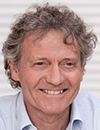 | Keynote Presentation Bioprinting: The Present and the Outlook for the Field
Gabor Forgacs, Professor, University of Missouri-Columbia; Scientific Founder, Organovo; CSO, Modern Meadow, United States of America
Bioprinting is a young, highly interdisciplinary field. Its modern era commenced in 2000 with the work of Thomas Boland and his re-engineered Hewlett Packard desktop inkjet printer. Since then a number of other technologies have been developed utilizing extrusion, acoustic waves, laser assisted delivery and lately “liquid bioprinting”. The field has also matured from its purely academic roots into successful commercial ventures. Meanwhile the initial hype surrounding the field has substantially subsided even if not fully disappeared. Long are the days when bioprinting has been hailed as a panacea for the chronic donor organ shortage, a method capable to replace dysfunctional tissue structures. At present it is mostly applied to the fabrication of sophisticated scaffold structures for tissue engineering and relatively small anatomically and physiologically relevant tissue constructs for drug development and testing and disease modeling. Overall, bioprinting has seen spectacular progress in the past 17 years and a number of market analyses have predicted a bright future for the field. I will provide a hype-free overview of the technology, where it stands today, what it has specifically accomplished and what can be expected in the years to come. |
| 09:45 | 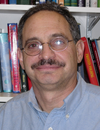 | Keynote Presentation Printing with Silks – New Approaches and Applications
David L. Kaplan, Stern Family Endowed Professor of Engineering, Professor & Chair -- Dept of Biomedical Engineering, Tufts University, United States of America
We continue to develop, study and apply silk protein-based inks useful
for 3D printing. The features of these inks involve all aqueous and
ambient processing, cyto-compatible features, versatility in control of
mechanical properties, avoidance of chemical or photochemical
crosslinking requirements, and the FDA-approved nature of the protein.
hese features support a range of studies related to biomaterials and
tissue engineering, as well as cell delivery and related themes. Our
most recent advances in building complex 3D structures using silk-based
approaches will be reviewed, including new processing methods,
underwater silk printing inks, and new modes to functionalize
biomaterials with silk ink jet printing for biomaterials. |
| 10:30 | 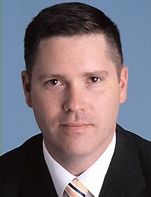  | Keynote Presentation 3D Printing for Engineering Complex Tissues
John Fisher, Fischell Family Distinguished Professor & Department Chair; Director, NIH Center for Engineering Complex Tissues, University of Maryland
Bhushan Mahadik, Assistant Director, NIH/NIBIB Center for Engineering Complex Tissues, University of Maryland, United States of America
The generation of complex tissues has been an increasing focus in tissue
engineering and regenerative medicine. With recent advances in
bioprinting technology, our laboratory has focused on the development of
platforms for the treatment and understanding of clinically relevant
problems ranging from congenital heart disease to preeclampsia. We
utilize stereolithography-based and extrusion-based additive
manufacturing to generate patient-specific vascular grafts, prevascular
networks for bone tissue engineering, dermal dressings, cell-laden
models of preeclampsia, and bioreactors for expansion of stem cells.
Furthermore, we have developed a range of UV crosslinkable materials to
provide clinically relevant 3D printed biomaterials with tunable
mechanical properties. Such developments demonstrate the ability to
generate biocompatible materials and fabricated diverse structures from
natural and synthetic biomaterials. In addition, one of the key
challenges associated with the development of large tissues is providing
adequate nutrient and waste exchange. By combining printing and
dynamic culture strategies, we have developed new methods for generating
macrovasculature that will provide adequate nutrient exchange in large
engineered tissues. Finally, the use of stem cells in regenerative
medicine is limited by the challenge in obtaining sufficient cell
numbers while maintaining self-renewal capacity. Our efforts in
developing 3D-printed bioreactors that mimic the bone marrow niche
microenvironment have enabled successful expansion of mesenchymal stem
cells by recapitulating the physiological surface shear stresses
experienced by the cells. This presentation will cover the diverse
range of materials and processes developed in our laboratory and their
application to relevant, emerging problems in tissue engineering. |
| 11:45 | 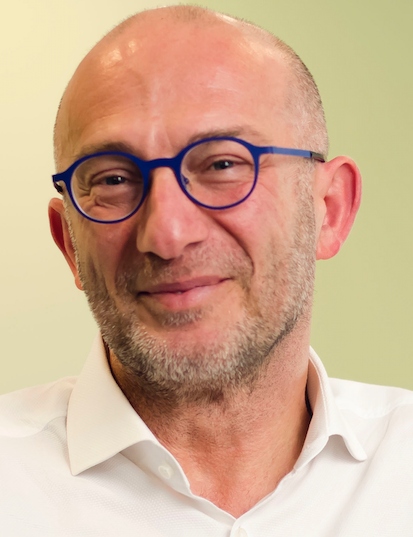 | Keynote Presentation “Extreme Microfluidics” Label-Free of Sorting of Extremely Rare Circulating Tumor Cells and Clusters
Mehmet Toner, Helen Andrus Benedict Professor of Biomedical Engineering, Massachusetts General Hospital (MGH), Harvard Medical School, and Harvard-MIT Division of Health Sciences and Technology, United States of America
Viable tumor-derived circulating tumor cells (CTCs) have been identified in peripheral blood from cancer patients and are not only the origin of intractable metastatic disease but also marker for early cancer. However, the ability to isolate CTCs has proven to be difficult due to the exceedingly low frequency of CTCs in circulation. As a result, their clinical use until recently has been limited to prognosis with limited clinical utility. More recently, we introduced several microfluidic methods to improve the sensitivity of rare event CTC isolation, a strategy that is particularly attractive because it can lead to efficient purification of viable CTCs from unprocessed whole blood. The micropost CTC-Chip (µpCTC-Chip) relies on laminar flow of blood cells through anti-EpCAM antibody-coated microposts, whereas the herringbone CTC-Chip (HbCTC-Chip) uses micro-vortices generated by herringbone-shaped grooves to efficiently direct cells toward antibody-coated surfaces. These antigen-dependent CTC isolation approaches, also called “positive selection”, led to the development of a third technology, which is tumor marker free (or antigen-independent) sorting of CTCs. We call this integrated microfluidic system the CTC-iChip, based on the inertial focusing strategy, which allows positioning of cells in a near-single file line, such that they can be precisely deflected using minimal magnetic force. The major advantage of the microfluidic negative depletion approach stems from the fact that it is based on “negative depletion” of blood cells and hence it is applicable to all solid tumors and does not require tagging or labeling the tumor cells. As a result the CTCs are isolated in pristine conditions and are amenable to analysis using imaging, molecular, and other approaches. We have also identified the presence of CTC clusters, which led to the development of a microchip that is designed to sort clusters of cells from whole blood without any labeling. The propensity of CTC clusters to lead to metastasis is significantly higher than single CTCs, and underlies the importance these cells play in the metastatic cascade. This presentation will share our integrated strategy to simultaneously advance the engineering and microfluidics of CTC-Chip development, the biology of these rare cells, and the potential clinical applications of circulating tumor cells. |
| 12:30 |  | Keynote Presentation Molecular Analysis of Rare Cells Using Magnetic Ranking Cytometry
Shana Kelley, Professor, University of Toronto, Canada
The analysis of heterogeneous ensembles of rare cells requires single-cell resolution to allow phenotypic and genotypic information to be collected accurately. We developed a new approach, magnetic ranking cytometry, that uses the magnetic loading of individual cells to be monitored as a means to report on levels of proteins and nucleic acids at the single cell level. This approach can be used to profile circulating tumor cells in blood and can be used in a variety of other applications where high-resolution cell separation provides useful information. |
| 13:15 | Networking Lunch in the Exhibit Hall -- Meet the Exhibitors and View Posters | 14:28 | Session Title: Innovations in Synthetic Biology | 14:30 | 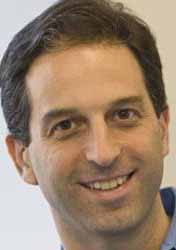 | Keynote Presentation Programmable Organoids With Synthetic Biology
Ron Weiss, Director, MIT Synthetic Biology Center; Professor, Massachusetts Institute of Technology (MIT), United States of America
|
| 15:00 | Development of in vitro Mucosal Interface in a Multi-well Plate
Jungwoo Lee, Assistant Professor, University of Massachusetts-Amherst, United States of America
The gastrointestinal tract (GIT) accounts for more than 75% of the body surface that directly contact with daily ingested foods along with microbes to absorb nutrients and water while keeping essential barrier function. This makes the GIT the prime site for the host-microbiome interactions where the host deploys about 80% of immune cells to protect and maintain homeostasis. The GIT epithelium consists of a monolayer of polarized cells arranged into microscopic features that increase the GIT surface area tremendously. Recent studies suggest that peristaltic motion would be critical for epithelial cell differentiation, polarization and structural arrange-ment into villi and crypts. Some progress has been made in recent times, there is still a growing need to develop model systems to integrate microbiome, epithelial cells, and immune cells in a single platform along with providing sufficient level of biological and mechanical complexity. To this end, we developed a mechanically actuated 3D tissue culture model system that can achieve the aforementioned integration of different cell types with multiple layer complexity in an easily adaptable well plate platform. In this study we demonstrate how this platform was used to mechanically stimulate colon carcinoma cells (HT-29) leading to polarization, vertical growth and 3D morphogenesis of these cells. | 15:30 | Coffee Break and Networking in the Exhibit Hall | |
Session Title: Afternoon Joint Session -- Emerging Themes and Companies in BioEngineering, circa 2018 |
| | 16:30 | 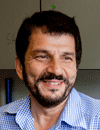 | Keynote Presentation Droplet Microfluidics For Single Cell Studies
David Weitz, Mallinckrodt Professor of Physics and Applied Physics, Director of the Materials Research Science and Engineering Center, Harvard University, United States of America
This talk will describe the use of microfluidic technology to control and manipulate drops whose volume is about one picoliter. These can serve as reaction vessels for biological assays. These drops can be manipulated with very high precision using an inert carrier oil to control the fluidics, ensuring the samples never contact the walls of the fluidic channels. Small quantities of other reagents can be injected with a high degree of control. The drops can also encapsulate cells, enabling cell-based assays to be carried out. The use of these devices for biotechnolgy and diagnostic applications will be described. |
| 17:00 |  The Age of Applications The Age of Applications
Ricky Solorzano, CEO, Allevi
In an era where bioprinting continues to hold promise sometimes its hard to understand why and how are they useful. What key applications will allow me to take my research to the next level and stay on the cutting edge. Come and listen to the key ways bioprinting is being most commonly used by researchers around the world.
| 17:30 |  Regenerative Medicine Research Performed Using EnvisionTEC’s 3D-Bioplotter Regenerative Medicine Research Performed Using EnvisionTEC’s 3D-Bioplotter
Nicole Witzleben, Biomedical Applications Engineer, EnvisionTEC
Within the field of Regenerative Medicine is the growing research branch into bioprinting. The main application of bioprinting is the creation of bone and tissue scaffolds for implantation. Such scaffolds are not meant to be permanently implanted within the body, they are intended to allow the body’s own tissue to regenerate around the scaffold as it dissolves. Five fields of research where bioprinting is widely used include bone regeneration, cartilage regeneration, soft tissue biofabrication, drug release, and organ printing. The 3D-Bioplotter is a rapid prototyping machine specifically designed to print biocompatible material for these applications. Various biomaterials can be selected by the user for the appropriate area of research or even printed simultaneously to fabricate multi-materials parts. The user is able to optimize the inner structure of the scaffold to meet the requirements of their project with different designs, including lines, zig-zags, waves, and honeycombs. This presentation will provide an insight into the developing field of bioprinting and the 3D-Bioplotter’s role in that growth. We will review the timeline in the development of research utilizing EnvisionTEC’s 3D-Bioplotter and reference noteworthy published studies in bioprinting.
| 18:00 |  Technology Spotlight: Technology Spotlight:
Building the World of Bioprinting: Science, Education, and Community
Erik Gatenholm, CEO, CELLINK, United States of America
Hector Martínez, Chief Technology Officer, CELLINK, United States of America
From the first bioink company in the world to a collaborative partner to an industry leader and scientific pioneer.
| 18:30 | Networking Reception with Beer, Wine and Appetizers in the Exhibit Hall. Engage with Colleagues and Visit the Exhibitors | 19:30 | Close of Day 1 of the Conference |
Tuesday, 27 March 201807:00 | Morning Coffee, Tea, Breakfast Pastries and Networking in the Exhibit Hall | |
Session Title: Emering Themes in the Various BioEngineering Fields |
| | 08:00 | Bio-machines and Bio-manufacturing
Xuanhe Zhao, Associate Professor, Massachusetts Institute of Technology (MIT), United States of America
While human tissues are mostly soft, wet and bioactive; machines are commonly hard, dry and biologically inert. Bridging human-machine interfaces is of imminent importance in addressing grand challenges in health, security, sustainability and joy of living facing our society in the 21st century. However, designing human-machine interfaces is extremely challenging, due to the fundamentally contradictory properties of human and machine. At MIT SAMs Lab, we propose to use tough bioactive hydrogels to bridge human-machine interfaces. On one side, bioactive hydrogels with similar physiological properties as tissues can naturally integrate with human body, playing functions such as scaffolds, catheters, drug reservoirs, and wearable devices. On the other side, the hydrogels embedded with electronic and mechanical components can control and response to external devices and signals. In the talk, I will first present a bioinspired approach and a general framework to design bioactive and robust hydrogels as the matrices for human-machine interfaces. I will then discuss large-scale manufacturing strategies to fabricate robust and bioactive hydrogels and hydrogel electronics and machines, including 3D printing. Prototypes including smart hydrogel band-aids, hydrogel robots and hydrogel circuits will be further demonstrated. | 08:30 | Contracting 3D Printed Microtissues: Solid and Fluid Instabilities
Thomas Angelini, Professor, Department of Mechanical and Aerospace Engineering, University of Florida, United States of America
Living cells are often dispersed in extracellular matrix (ECM) gels like
collagen and Matrigel as minimal tissue models. Generally, large-scale
contraction of these constructs is observed, in which the degree of
contraction and compaction of the entire system correlates with cell
density and ECM concentration. The freedom to perform diverse mechanical
experiments on these contracting constructs is limited by the
challenges of handling and supporting these delicate samples. Here, we
present a method to create simple cell-ECM constructs that can be
manipulated with significantly reduced experimental limitations. We 3D
print mixtures of cells and ECM (collagen-I) into a 3D growth medium
made from jammed microgels. With this approach, we design microtissues
with controlled dimensions, composition, and material properties. We
also control the elastic modulus and yield stress of the jammed microgel
medium that envelops these microtissues. Similar to well-established
bulk contraction assays, our 3D printed tissues contract. By contrast,
the ability to create high aspect ratio objects with controlled
composition and boundary conditions allows us to drive these
microtissues into different regimes of physical instability. For
example, a contracting tissue can be made to buckle as a whole or break
up into droplets, depending on composition, size, and shape. These new
instabilities may be employed in tissue engineering applications to
anticipate the physical evolution of tissue constructs under the forces
generated by the cells within. | 09:00 | Digital Biomanufacturing Enabling Multimode 4D Bioprinting
William G Whitford, Life Science Strategic Solutions Leader, DPS Group, United States of America
3D bioprinting is the deposition of microchannels or droplets of a polymer and/or cell dispersion (bioink) to create 3D tissue-like structures that includes living cells. 4D bioprinting adds the extra dimension of time supporting the activity of smart, environmentally responsive biological structures and tissues. Many types of printing technologies are now used in bioprinting and each require appropriate manufacturing equipment, procedures and materials. Digital biomanufacturing orchestrates such concepts as increased monitoring, data handling, control algorithms, machine-learning and process modeling to a new level of process understanding, prediction and control. The IIoT, Big Data and Cloud technologies insure that the (historical and real-time) data being collected can be employed productively in richer data management, analysis and model generation. This leads to such values as more rapid process development as well as more comprehensive process control, automation and self-learning autonomation. Digital biomanufacturing will assist in the modeling and imaging required to recapitulate the (often personalized) complex and heterogeneous architecture of functional tissues and organs. It will also provide the required coordination and dynamic control of consequent complex tomographic information and models, multimode 3D printing and biofabrication processes, as well as such ancillary procedures as the environmental control of bioinks and nascent constructs. | 09:30 |  | Keynote Presentation Layer-By-Layer Tissue Engineering Using Prefabricated Parts With Organ Cell Density
Jeffrey Morgan, Professor of Medical Science and Engineering, Brown University, United States of America
|
| 10:00 |  | Keynote Presentation Human “Body-on-a-Chip” Systems to Test Drug Efficacy and Toxicity
Michael Shuler, Samuel B. Eckert Professor of Engineering, Cornell University, President Hesperos, Inc., United States of America
Human microphysiological or “Body-on-a-Chip” systems are powerful tools
to assess the potential efficacy and toxicity of drugs in pre-clinical
studies. Having a human based, multiorgan system, that emulates key
aspects of human physiology can provide important insights to complement
animal studies in the decision about which drugs to move into clinical
trials. Our human surrogates are constructed using a low cost, robust
“pumpless” platform. We use this platform in conjunction with
“functional” measurements of electrical and mechanical activity of
tissue constructs (in collaboration with J. Hickman, University of
Central Florida). Using a system with four or more organs we can predict
the exchange of metabolites between organ compartments in response to
various drugs and dose levels. We will provide examples of using the
system to both predict the response of a target tissue as well as
off-target responses in other tissues/organs. We believe such models
will allow improved predictors of human clinical response from
preclinical studies. |
| 10:30 | Coffee, Tea and Networking in the Exhibit Hall | 10:30 |  Recombinant Human Collagen Based BioInk for 3D Bioprinting Recombinant Human Collagen Based BioInk for 3D Bioprinting
Nadav Orr, Vice President, R&D, CollPlant, Ltd. Israel
Recombinant human Type I collagen (rhCollagen) from engineered plants
was developed as BioInk for 3D-Bioprinting. The BioInk, rhCollagen-MA,
is compatible with all major printing technologies. It has superior
rheological properties and demonstrated high biocompatibility with
different cells types.
| 11:00 | Autocatalytic Immune Reactions
Daniel Irimia, Associate Professor, Surgery Department, Massachusetts General Hospital (MGH), Shriners Burns Hospital, and Harvard Medical School, United States of America
Alex Robert Hopke, Research Scientist, Mass General Hospital (MGH), United States of America
Neutrophil swarms protect healthy tissues by sealing off sites of infection. During swarming, neutrophils accumulate fast and in large numbers, under the control of mediators released by neutrophils already at the site. These mediators stimulate the arrival of additional neutrophils in an autocatalytic reaction that results in an exponential rate of swarm size increase. However, despite the autocatalytic reaction, not all 25 billion neutrophils from one’s body end up in one giant swarm. Thus, our recent goal was to identify the physiologic mediators that disrupt the autocatalytic reaction and stop the growth of neutrophil swarms. For this, we developed and validated large microscale arrays of microbe clusters, which can trigger the synchronized growth of thousands of swarms at once. The new tool enabled us to concentrate large amounts of swarm-released mediators in small volumes, and ultimately identify lipoxin A4 (LXA4) is a key mediator that disrupts the autocatalytic reactions, stops the growth of swarms, and ultimately leads to swarm dispersal. These and other insights from the study of neutrophil swarming will teach us how to design better strategies to combat infections and to control acute and chronic inflammatory diseases. | 11:30 | Hierarchical Biomaterials for Organ-on-a-Chip Devices and Tissue Engineering
Frederik Claeyssens, Senior Lecturer, Materials Science and Engineering, University of Sheffield, United Kingdom
Natural tissues and organs are typically structured in a hierarchical fashion, in which the Extra-Cellular Matrix (ECM) provides a microporosity to optimally support cell growth while larger scale structures (e.g. vasculature and boundary layers) are incorporated to support the function and structure of the tissue and organ. To mimic this multiscale structuring in synthetic biomaterials we combine additive manufacturing with self-assembly. In this structuring technique the internal porosity is governed by self-assembly and the macroscopic structure is constructed by additive manufacturing. Emulsion templating is used as self-assembly technique to produce materials with a high microscale porosity. These emulsions can subsequently be used as photocurable resins for stereolithography, producing user-defined macroscale structures with a tissue-like microporosity. The mechanical properties of these materials can be varied via the changing the monomer ratio within the resin. Additionally, biodegradable scaffolds can be fabricated via polycaprolactone-based resins. We produce these hierarchical structured material in 3D structured materials such as woodpile-style scaffolds, microspheres with controllable diameter and as 3D microenvironments that can be integrated in standard poly-dimethylsiloxane (PDMS) based microfluidics. These scaffolds we currently investigate as a platform for organ-on-a-chip based devices and tissue engineering. | 12:00 | Networking Lunch in the Exhibit Hall | |
Session Title: Emerging Technologies and Applications Session and Late-Breaking Abstracts |
| | 13:30 | Active Materials for Remotely Regulating Complex, Multi-drug Delivery Profiles
Stephen Kennedy, Assistant Professor of Biomedical and Chemical Engineering, University of Rhode Island, United States of America
Biological processes are characterized by a high degree of
spatiotemporal complexity and often manifest as a highly choreographed
sequence of biological events. Biomaterials such as hydrogels can
provide the localized deliveries needed to regulate biological
processes. However, they are incapable of regulating multi-drug delivery
profiles with the level of control required to regulate complex
biological processes (i.e., control over the timing, rate, and sequence
of multiple therapeutics). Moreover, the timings, rates, and sequences
delivered for particular therapies must likely be customized for
individual patients and may need to be changed in real-time according to
updated patient prognoses. This necessitates the need for on-demand
regulation over the timings, rates, and sequences of deliveries. Here,
we will present strategies for on-demand, remote control over the
timing, rate, and sequence of therapeutic deliveries from hydrogels
using electrically, magnetically, and ultrasonically active materials.
We will further describe biological scenarios where the deliveries
provided by traditional hydrogels can be greatly improved upon using
remotely activated materials (e.g., wound healing, tissue engineering,
chemotherapies). Finally, we will demonstrate that these remotely active
hydrogel materials have the potential to deliver optimized delivery
schedules in a wide range of therapeutic strategies. | 14:00 | 3D Printing Functional Materials & Devices
Michael McAlpine, Kuhrmeyer Family Chair Professor of Mechanical Engineering, University of Minnesota, United States of America
The development of methods for interfacing high performance functional
devices with biology could impact regenerative medicine, smart
prosthetics, and human-machine interfaces. Indeed, the ability to
three-dimensionally interweave biological and functional materials could
enable the creation of devices possessing unique geometries,
properties, and functionalities. Yet, most high quality functional
materials are two dimensional, hard and brittle, and require high
crystallization temperatures for maximal performance. These properties
render the corresponding devices incompatible with biology, which is
three-dimensional, soft, stretchable, and temperature sensitive. We
overcome these dichotomies by: 1) using 3D printing and scanning for
customized, interwoven, anatomically accurate device architectures; 2)
employing nanotechnology as an enabling route for overcoming mechanical
discrepancies while retaining high performance; and 3) 3D printing a
range of soft and nanoscale materials to enable the integration of a
diverse palette of high quality functional nanomaterials with biology.
3D printing is a multi-scale platform, allowing for the incorporation of
functional nanoscale inks, the printing of microscale features, and
ultimately the creation of macroscale devices. This three-dimensional
blending of functional materials and ‘living’ platforms may enable
next-generation 3D printed devices. | 14:30 | Towards Bioprinting Industrialization
Fabien Guillemot, CEO, Poietis, France
Bioprinting has been defined as “the use of computer-aided transfer processes for patterning and assembling living and non-living materials with a prescribed 2D or 3D organization in order to produce bio-engineered structures serving in regenerative medicine, pharmacokinetic and basic cell biology studies”.
From a technological point of view, different bioprinting technologies have been developed so far. Recently, Laser-Assisted Bioprinting (LAB) technology has emerged as an alternative method to inkjet and bioextrusion methods, thereby overcoming some of their limitations (namely clogging of print heads or capillaries) to pattern living cells and biomaterials with a micron-scale resolution and high cell viability.
During this presentation, we will present current development on the industrialization of bioprinting process, namely in the context of manufacturing 3D skin models. | 15:00 | Bioprinting Multicellular Structure to Advance Vascularized 3D Tissue Engineering
Alisa Morss, Associate Professor, Drexel University, United States of America
3D vascularized tissue engineering would enable mechanistic study of
healthy and diseased tissues, deliver a powerful platform for drug
screening, and potentially provide a replacement for diseased tissues.
The standard 3D tissue biofabrication process is layer-by-layer printing
of a bioink composed of cells within a matrix material. While this
process allows cells to be printed in a specific pattern to guide them
towards the desired 3D structure, it relies primarily on cellular
self-assembly into a 3D architecture that hopefully recapitulates the in
vivo tissue. Unfortunately, cellular self-assembly may take days or
weeks, may require complex spatial and temporal environmental cues, or
may not occur when two cell types are co-cultured together. Because of
these challenges, critical features of the tissue microenvironment
cannot be recapitulated, and therefore cell-cell interactions cannot be
studied in a physiologically relevant in vitro model. In this research,
we created a new bioprinting paradigm in which multicellular structures
that recapitulate in vivo architecture were used to create a 3D
vascularized breast cancer tissue model. The multicellular structures
were either grown in vitro prior to printing, or they were derived from
tissues (e.g., breast organoids). Our method decreases the time between
bioprinting and experimental assay from weeks to days; increases
physiological relevance by allowing the investigator to more precisely
control tissue architecture; and enables the use of primary human
tissues together with stromal cells and local extracellular matrix. | 15:30 | Stimuli-Responsive Therapeutic Bioinks for 3D Printing
Rachael Oldinski, Assistant Professor, Department of Mechanical Engineering, University of Vermont, United States of America
The development of stimuli-responsive, or ‘smart’ biomaterials is
critical to the manipulative manufacturing of custom tissue engineering
scaffolds and implants. This talk will focus on the modification of a
seaweed derivative, alginate, for the design of sustainable materials
for tissue engineering construct development using 3D printing
technology. | 16:00 | Distilling Complexity to Advance Cardiac Tissue Engineering via 3D Bioprinting
Brenda Ogle, Associate Professor of Biomedical Engineering, University of Minnesota, United States of America
The promise of cardiac tissue engineering is in the ability to design
replacement muscle for clinical therapy. Refined techniques for
deriving cardiac muscle cells from stem cells coupled with advanced
scaffolding techniques and 3D bioprinting are paving the way for a new
generation of simulated cardiac tissues. Recent success, ongoing
challenges and the role for industrial innovation in this growing field
will frame the content of this talk. | 16:30 | Glioblastoma Growth In Vitro 3D Modelling in an Adjustable Nanofiber-Hydrogel Hybrid Synthetic Scaffold
Nikita Grigoryev, Adjunct Professor, NYU Tandon School of Engineering, United States of America
Glioblastoma multiforme (GBM), the most aggressive form of brain cancer that originates from glial type stem cells. Recent discoveries show that glioma growths show a mysterious property of mosaic tumor heterogeneity. Arising from the same common precursor, later stage tumors and individual migrating GBM cells exist in intermingled clonal subpopulations with mutually exclusive gene amplification contributing to an “epigenetic switch” that gives rise to malignant invasive subclones that escape the original tumor, heavily aggravating the disease progression and patient survival. Current in vitro models are typically far from physiological actuality and do not provide necessary 3D mechanobiological environment native to brain tissue. Our unique approach uses a marriage of patented electrospinning/nanofiber coating technique and dipping/cell trapping gelation method to create a layered scaffold construct for GBM in 3D. A hydrogel layer is built over a glass rod by dipping into either an acellular alginate solution (as a niche for cancerous invasion) or a cells-alginate suspension and is crosslinked by dipping into a cation solution. Subsequently, electrospun nanofibers are deposited directly onto each hydrogel layer for controllable nanotopography exterior similar that of native, while the hydrogel, as soft as brain, itself surrounds cells. We have confirmed successful growth, spread and invasion of originally seeded cells into acellular layers of our construct with an appearance of tumor-like structures resembling those found in-vivo. Our proposed adjustable 3D model is completely artificial and provides cells with mechanobiological nanoenvironment comparable to that of native tissue, while also allowing for easy cancerous growth tracking through transparent layers. | 17:00 | Sessile Drops on a Petri Dish for Biocompatible Cell-based Assays
Aishah Prastowo, DPhil student, University of Oxford, United Kingdom
We developed a technique of performing cell-based assays in drop arrays on a standard tissue-culture polystyrene petri dish without further surface modification, and modelled the adsorption of serum in the cell media at the liquid and solid interfaces. | 17:30 | Close of Day 2 of the Conference. |
|
